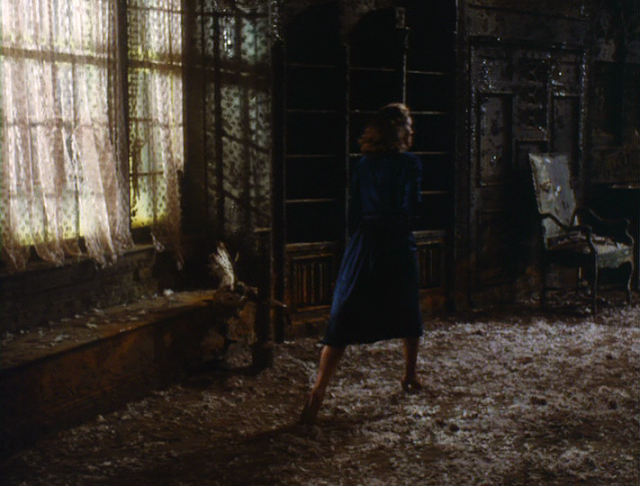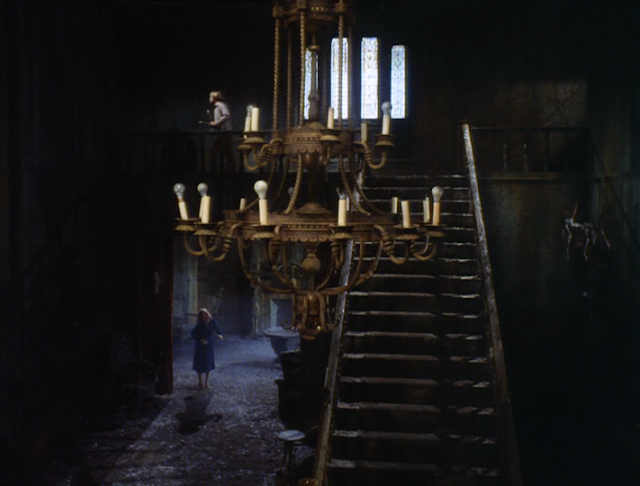Immense. Portraits of fear. Crane shots of decision.
Movements. Distance to foreground. Over and over. A movement mockery, the pull and trajectory of decision manifested in cinema. A mournful toying, the bleak redundancy of the movements, forward, back, to and fro, what's behind you and before, at your feet and creaking the floorboards above you, a Sisyphean boulder: fear and our endless state of decision.
The camera and the crane is both fate and decision. It is both Rube Goldberg (by way of accidentally toppled knickknack, collapsing flue, scuttling rats, creaking floorboards) and Susan finally "meeting the man she came here to meet."
Her dance with the camera - multiple times does she twirl in relation to us, and her migration through the manse is a three-step progression - endows grace and form, in other words a compassionate sense, to subtle suffering. The chimney's expiration of dust is a moment of pure dance, cinema as dance.
The sequence is a complex and interconnected series of shots. It is a cinematic poem: the constantly enclosing repetition of movements (of both Susan and the camera; Susan is literally made to move in a circle) is the unifying meter, its conveyance of a terrible existential state the eloquent rhyme. The sequence is unpredictable. The patterned jumping camera both jumps closer and jumps away at different, alternating times. Movements are foreseen, but subverted in equal measure as they are conventionally built up to, suggesting Hooper's critical art. This sequence is not here to scare or impress. It is why one of its most stylish push-in shots is subverted by Susan simply crossing it. Like a poem, it does not exist for any narrative satisfaction. It is communicative about plight. Not impressive, it is complexly meaningful.
* * *




































































No comments:
Post a Comment